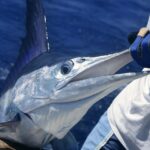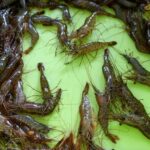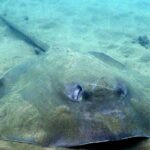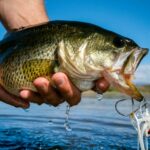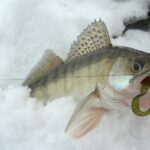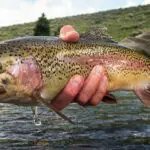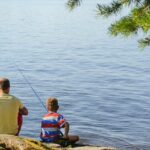Bottom fishing is a fun way to fish and can be done in almost any water. There are several techniques and methods to experiment with, and many anglers enjoy bottom fishing for the variety that it provides. However, the bait you use for bottom fishing is critical and can significantly affect your bottom fishing success.
The best baits for bottom fishing include live baitfish, shrimp, worms, crustaceans, squid, crab, hellgrammites, leeches, large insects, commercial bottom feeder bait, cut and stripped bait, fish egg bait, and even eels. All bottom-dwelling creatures are good bottom-feeder bait.
The type of bait used for bottom fishing is critical, but the good news is that a wide range of bait options can be used for freshwater and sea bottom fishing. There are many options to try. Explore as many as possible, and you will find bait that works for you.
What Bait Can You Use For Bottom Fishing?
Bottom fishing has many techniques and rig options, but bait makes a big difference in this type of fishing. Bottom fish are not particularly picky eaters, and they are usually confident fish with very few natural predators, which means they are likely to eat almost anything.
This is especially true for very large bottom fish that must eat often to support their large size.
With that said, some bait items work much better than others. It is essential to understand the type of fish you are catching, as some fish will not eat certain bait items, and certain fish have particular diets that the bait must fall within.
However, most bottom feeders eat a wider range of food items, making it easy to bait for them. Here are some of the best bait options for bottom fishing in fresh and saltwater.
Bait Fish
The best bait for bottom fishing, especially when fishing for large bottom feeders, is bait fish. Bottom feeders in fresh and saltwater are almost always predatory and carnivorous. Using live bait fish is the best way to get them on a line.
You must use bait fish that are small enough for the fish that you are targeting. If the bait is too big for the fish, they will pull it off the hook, and if the bait is too small, the fish may not bother trying to eat it.
It is always best to catch bait fish at your fishing location and use them to catch larger bottom feeders. This way, you can be almost guaranteed to catch something, as the bottom feeders are actively looking for these fish and always ready to eat them.
You can also buy live bait fish from bait and tackle shops, especially if you are fishing in the ocean, but it is usually more fun and more successful to use bait fish from the environment.
Ensure that you place the fish on your hooks correctly and in a way that allows them to breathe and stay active while you wait for a bite.
Using bait fish is more challenging and requires more time and skill, but it is the most effective and reliable way to catch the best bottom feeders.
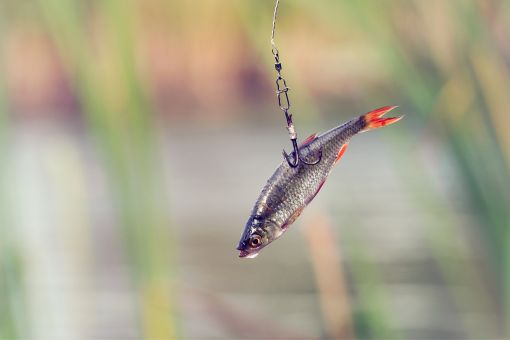
Worms
Bottom feeders, especially freshwater bottom feeders, eat worms. There are several worms present in freshwater, especially along the bottom, and these often form a large part of the bottom feeder diet.
This makes using worms an excellent option for bottom-feeder bait. It is best to catch the worms in the environment yourself and bait with what you find, but worms are usually very easy to buy at bait shops.
If the bait shop is well-equipped, they may help you buy the right worm type for the fish you want to catch, which can give you an advantage.
Most species of worms for bait are very easy to find and very affordable. However, there are some worm species, such as Bloodworms, that are very expensive. These worms are well worth the price, as Bloodworms are an excellent bait item for bottom feeders.
Using the right type of worms for the fish you want to catch is important. Most bottom-feeders are likely to eat any worm, which makes live worms an excellent option for bottom-feeder bait. You can also learn how to grow worms for bait.
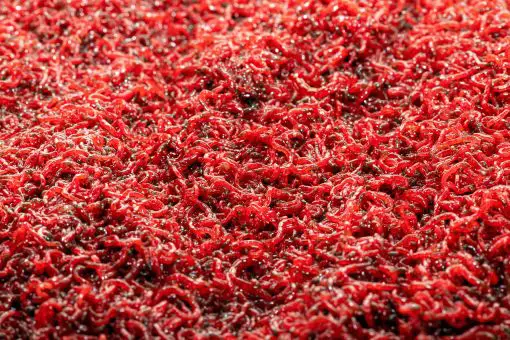
Shrimp
Shrimp is good bottom-feeder bait for ocean fishing. Shrimp are especially common where bottom feeders dwell, including underwater structures and landscape features. This means that bottom feeders are accustomed to eating shrimp.
If you can catch live shrimp to use as bait, then do so, but they are also very easy to find for purchase. Live shrimp are best for catching bottom feeders, but even frozen shrimp have been known to work well as bottom feeder bait.
Another benefit of using shrimp for live bait is that they are much easier to handle and to get on the hook than other bait items, such as live baitfish.
If you know where to look for wild shrimp, they are very easy to find, but if you have no other option but to buy them, they are very affordable. Shrimp works well for most saltwater bottom feeders, and they have been proven to be very successful bait for this purpose.
Squid
Squid is a somewhat unconventional bait option, but if you have it available, it has been known to be a good bottom feeder bait due to its high oil content.
Live squid is not usually an option, but squid tentacles are dead squid and good bottom-feeder bait for saltwater fish.
It is easy to manipulate squid and get it onto hooks. Squid also lasts well in the water and is very attractive to bottom feeders. Squid is also very cheap to buy, and you can use it as bait for other fish too. You can even freeze the squid that you buy and save it for your next trip if you do not use it all.
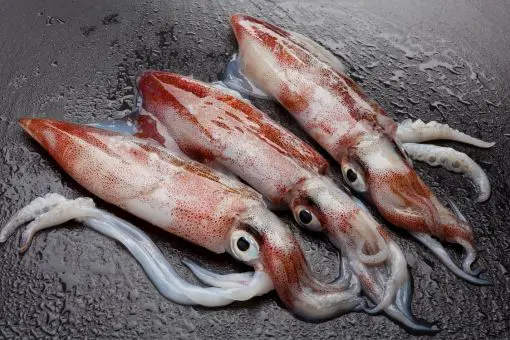
Crab
Crab is another good bait item for saltwater bottom feeders. Crabs are naturally found at the bottom of the ocean, especially where there are structures, dead fish, and other food items or near reefs.
This is the same habitat for ocean bottom feeders, which means they commonly eat crab, making crab a good option if you want to catch a bottom feeder.
It can be difficult to hook a live crab, but they are very easy to hook when dead. Even crab legs will do the job of catching bottom feeders.
Using crab allows you to catch bottom feeders of various sizes. You can use small crabs or crab limbs to catch small bottom feeders or whole, large crabs to catch large bottom feeders. There are several options when using this bait, and it works very well for many bottom-feeder species.
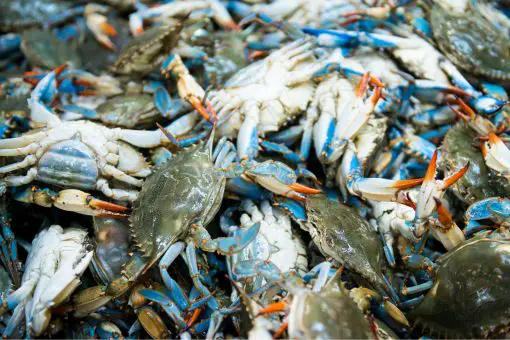
Crayfish
Crayfish and other crustaceans are excellent bottom feeder bait. There are several species of crayfish and other such animals, which means you can use them in freshwater and saltwater fishing, depending on which species you use.
Bottom feeders look for crustaceans as food, as they are commonly found in the same habitat and at the same depths as bottom feeders.
Crayfish and crustaceans are easy to get onto hooks. When they are used as live bait, their movement along the bottom is very likely to attract a bottom feeder, especially larger specimens of bottom feeders.
These animals make excellent live bait, but bottom feeders will also eat them as dead bait, and they can even be frozen, cut, stripped, or even cooked and still be effective bottom feeder bait.
If you have access to crustaceans such as crayfish or know where to catch them, they should be at the top of the list of bait for bottom-feeder fishing.

Hellgrammites
Hellgrammites are the aquatic larvae of megalopteran insects, such as dobsonflies, fishflies, and alderflies. These larvae look similar to centipedes but are much thicker and sturdier.
Hellgrammites are an excellent source of nutrition for bottom feeders, as these larvae are full of many nutrients and calories that these fish need to thrive.
These larvae are typically found along the bottom of rivers and other freshwater bodies. There can be many thousands of these larvae in a single area during certain times of the year, which makes them a substantial portion of the freshwater bottom-feeder diet.
These larvae can be difficult to catch, but they are bred as fish bait, so you can buy them from suppliers. However you obtain them, hellgrammites are excellent bottom-feeder bait.
There is a range of hellgrammite species, including some that grow very large. The larger species are ideal for catching larger fish, and the smaller larvae are better for smaller species of bottom feeders.
Regardless of which hellgrammites you use, you will surely catch bottom feeders with them. This bait works very well, can be used live or dead, and is a favorite among bottom-feeder anglers.
Leeches
Leeches are another excellent bait item for freshwater bottom feeders. Leeches are a type of worm, very common in freshwater, especially slow-moving water.
These worms are a major food source for many bottom feeders, so bottom feeders actively seek leeches to eat where possible.
Leeches are very cheap to buy, but they are difficult to find on your own. Buy them in bulk, put them on your hooks, and send them to the bottom. You are sure to catch all manner of bottom feeders with leeches.
There are some species of leech that grow to shockingly large sizes and some that are very small. This means that you can choose the leeches you use for bait depending on the size of the bottom feeder you are targeting. Use large leeches for large fish and small leeches for small fish.
Leeches are sure to catch bottom feeders, especially if you use leeches commonly found in the fishing area, as the fish are accustomed to eating them.
Large Insects
Large insects are not commonly seen as bottom-feeder bait, but the reality is that some large insects, even though they are not found at the bottom of rivers or the sea, are bottom-feeder magnets.
All carnivorous fish eat insects. The larger the insect is, the more nutrition it contains and the more attractive it is to fish.
Fishing with insects is very easy. Insects are exceedingly cheap to buy, they are very easy to find, and they are highly effective fish bait.
Using insects to catch bottom feeders is very successful, but it is critical to get the right insects for the region you are fishing in. Speak to local fishermen and bait shop workers to find out which insects work best in the area, and you are sure to catch many bottom feeders with them.
Eels
Eels are another good bait item for bottom feeders, especially in saltwater. There are several species of eel that can be used for this purpose, but not all eels make good fish bait.
However, if you use the right eels for the fishing area, you can be very successful.
Bottom feeders are known to eat eels when possible and make good bottom-feeder bait. You can use live or dead eel, sliced or cut bait, or frozen eel for this purpose.
Only be sure that the eel you use is native to the area, the fish you are catching are used to seeing it, and that the eel is not rotten or spoiled or is unlikely to be good bait for bottom feeders.
Dead Bait
Dead bait is very commonly used for bottom fishing. Dead bait is very effective for this type of fishing and is a favorite bait item for many bottom fishermen.
Dead bait can be any prey item that bottom feeders eat. Baitfish, shrimp, squid, crab, or any other bait can also be used live for bottom fishing.
Many anglers who engage in bottom fishing prefer using dead bait because it is significantly easier to use and makes bottom fishing far more straightforward.
Fishermen who enjoy bottom fishing for the relaxing side of the activity tend to prefer using dead bait.
The great thing about this type of fishing is that most bottom feeders are not picky eaters, and dead bait is very effective for this fishing.
You can be highly successful with dead bait while fishing, especially if you use dead bait that is appropriate for the fish you are catching and the water you are fishing in.
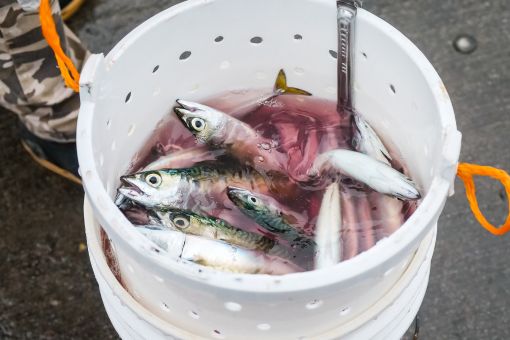
Cut And Strip Baits
Cut and strip baits are larger bait items cut into pieces or strips before being attached to fishing tackle. This type of bait is very common for all bottom fishing, as most of these fish are carnivorous, and cutting and stripping meat or fish as bait is very convenient.
Everyone can get fish or chicken from a supermarket. Everyone can get squid, shrimp, or crab from bait shops. Cutting or stripping these items is an excellent bait for catching bottom feeders.
Strips of bait or cut-up pieces of bait can be dried, frozen, or otherwise preserved for later use. They can be purchased in bulk and stored, easy to obtain, and very easy to use.
These attributes make cut and strip baits very common for bottom fishing, even though they are slightly less effective than using methods such as live baitfish.
Chicken Livers
Chicken livers can be an effective form of bottom fishing bait, even more effective than most people realize.
This form of bait can be used in freshwater and saltwater and is effective for bottom feeders of all sizes.
Chicken livers are easy to find, cheap to buy, and require no processing to be used as bait. Simply place some chicken livers onto a hook, sink your gear, and wait for the bite.
This is a very simple and straightforward form of bottom feeder bait, but it is surprisingly effective, especially during times of the year when food may be scarce for bottom feeders.
Commercial Prepared Bait
Commercially prepared bait is a very viable option for bottom fishing. There is commercially available bait specially formulated for certain types of fish and fishing, including bottom feeders and bottom fishing.
Finding the right type of bottom fishing is easy if you walk into a bait shop, ask them for bottom feeder bait, and buy a bag of formulated bottom feeder bait.
This bait is designed to be attractive for bottom feeders and to work well for this type of fishing.
If you want to get the easiest bait possible for bottom fishing and know it will be effective, commercially designed fishing bait is the best option.
Fish Egg Bait
Fish egg bait is becoming more popular among the bottom fishing community, especially for fishing for large trout.
Freshwater bottom feeders such as trout often eat the eggs of other fish, and when these eggs are turned into bait, it is very effective for this type of fishing.
There are several types of fish egg baits available, so choose the option that best suits your budget and the type of fish you are going for, and you will find that fish egg bait is very effective for bottom fishing.
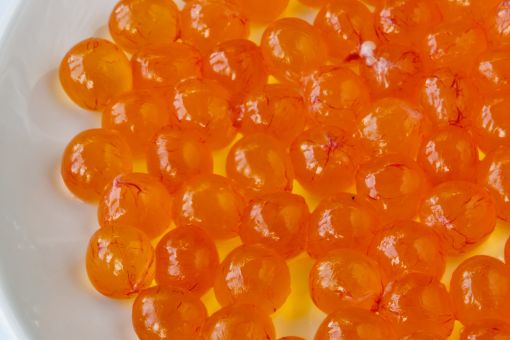
Conclusion
Bottom feeders will eat many different food items, which means that finding bait for bottom fishing is surprisingly easy. The best thing to do is to understand the bottom feeders in the water you fish and choose your bait based on their preferred diet.
Bottom fishing can be fun and exciting or relaxing and peaceful, depending on how you do it. Take the time to find the right bait for your fishing style, location, and target fish, and you will have a great time fishing for bottom feeders.
- Do You Need An Indicator For Nymph Fishing? - November 16, 2023
- Fishing Safety Tips For Families - September 25, 2023
- What Is The Best Time To Night Fish At A Lake? - September 18, 2023

